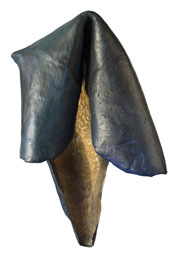Fiction Review
Étienne’s Alphabet
By James King
Toronto, ON: Cormorant Books, 2010
Dictionaries are not typically books we think of as being subjective. Rather, they are factual sources – somewhere to turn when you need to decide on a Scrabble word or solve a crossword debate. Dictionaries are not typically something people make up for themselves. Enter James King, who, in his novel Étienne’s Alphabet, does just that. Presented as the autobiography of the fictional artist Étienne Morneau, Étienne’s Alphabet is a personal story structured alphabetically instead of chronologically. It’s an interesting take on a familiar form and, for the most part, it works wonderfully.
Although the story is slow to get going – for the first few letter sections each anecdote and memory feels disjointed – a flow does develop to Étienne’s chosen genre of self-expression and individual events are typically presented in chronology, even if it takes him several letters to get through them. I found this jarring at first, but there is a logic to the seemingly higgledy-piggledy arrangement. In many ways, reading Étienne’s Alphabet is like getting to know a real person, because no one tells their life story in one chronological swoop; rather, it comes out in pieces that you put together for yourself. King has created a complex, interesting and surprisingly normal character in Étienne, but most of all, he has created a character with a personality and mannerisms so vivid he could walk right off the page.
At the time he is writing (1966 and 1967), Étienne is a 34-year-old teller for Royal Bank in Toronto, a French-Canadian, and an orphan. Like most people looking back at their life, there are some key events and themes that Étienne returns to repeatedly as his alphabet progresses. The story of how he was discovered by the nuns at the Montreal orphanage seems especially haunting – how, he wonders, could his mother have left him outside in the winter, all alone. His memories of childhood are quite striking in both their specificity and their point of view; it isn’t always easy to render childhood memories in a realistic way, but King has done a very convincing job of it. Of course, Étienne also writes a lot about his day-to-day life with the Beaulieu family, from whom he rents a room. Étienne is not very social, and the Beaulieus are the main people in his life – besides his colleagues and the customers he serves at the bank – and their family life and pop-culture preferences get repeated attention in his definitions.
The big turning point in the narrative, which is actually revealed in stages since the structure prevents lengthy ruminations on any one event, is Étienne’s visit to Shanghai. He is sent there for work, knowing nothing about the city except what he read in Tin Tin comics as a boy. Not only did this trip open up Étienne’s eyes to the world around him, but it also inspired his creativity, leading directly to his impulsive foray into art.
But perhaps more revealing than the events and themes themselves, are the words Étienne chooses to define them by. For example, rather than entering into his thoughts on camels in the C-section, Étienne waits until D to discuss dromedaries and their ilk. Similarly, some people are filed by first name, others by surname. All the categorizing makes perfect sense considering that Étienne is, as he explains in one entry, a list-loving obsessive-compulsive.
By far my favourite part of the novel, though, comes at the beginning of each new letter-section when Étienne describes the personality of the letter at hand. “U: Is it simply a rounded-off V or a member of the alphabet in its own right? Many serious self-esteem issues here,” he declares without a hint of self-recognition; “F is the Hamlet of the alphabet. Very indecisive. It is forced to ask itself on a daily basis, Am I just some sort of bedraggled E?” Although Étienne’s memories and self-reflection are interesting to read, they sometimes feel too obvious, like overly specific character traits that King wanted to hammer home. The letter descriptions are what make this entire book work, because for all of Étienne’s self-aware discussion, these brief introductions give us a window into the true man behind the autobiography.
Étienne’s life is presented as a collage, which can seem a bit disconnected when looked at piece by piece. But as you read through, the larger picture begins to emerge, and Étienne’s life comes together in a startling and vivid way. I half-expected the novel to finish before reaching Z – it seems almost too perfect, otherwise – but Étienne managed to make it through the whole alphabet before dying of heart failure (which you find out at the very beginning). It’s a little convenient, but you just know Étienne would feel better knowing it was all wrapped up.





No Comments so far ↓
There are no comments yet...Kick things off by filling out the form below.